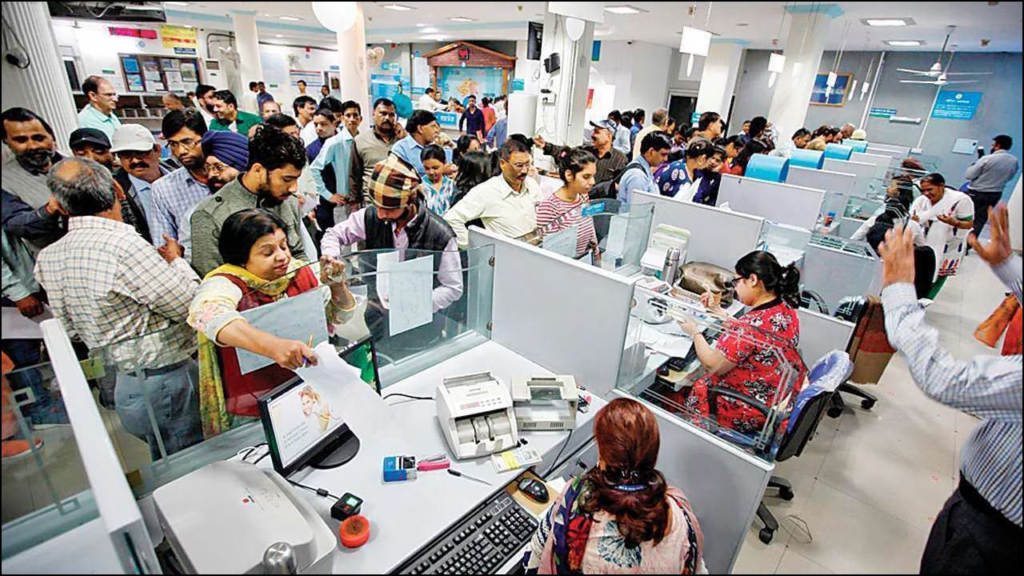More than half of consumers, or about 52 percent, say they are hesitant to borrow through FinTech platforms, according to recent survey findings by multiple market research firms. Instead, traditional banks remain the most trusted source for loans, despite the rapid growth of digital competitors offering convenience and speed.

The findings highlight a persistent gap between financial technology’s promise and public confidence. Although fintech firms provide faster approvals, mobile-first platforms, and wider access for underserved groups, many borrowers still value the stability and regulatory protection of banks.
Why Consumers Fear FinTech
Experts say concerns around data security, fraud, and weak regulatory protection remain central. Dr. Anita Mehta, professor of finance at Delhi University, explained: “Consumers fear their data may not be safeguarded on fintech platforms, and they perceive fewer safeguards compared to the protections available through banks.”
A World Bank policy report on fintech risks has noted that many borrowers feel uncertain about digital grievance mechanisms. The absence of a physical branch and the lack of personal interaction weaken perceptions of accountability.
Historical Trust in Banks
The roots of bank trust are deep, particularly in India. Following the nationalisation of banks in 1969, state control ensured that deposits were viewed as secure, even in times of financial uncertainty. The introduction of deposit insurance by the Deposit Insurance and Credit Guarantee Corporation (DICGC) further reassured customers.
This long history of state-backed stability contrasts with fintech, which only began to expand in India over the past decade. For many consumers, banks represent safety built on generations of experience, while fintech remains untested in comparison.
Generational and Regional Divides
Generational differences also influence attitudes. Younger borrowers, particularly those under 35, show greater willingness to experiment with fintech apps. They cite convenience, digital-first processes, and lower barriers as key attractions. Older borrowers, however, remain more cautious.
Urban populations, where digital literacy and smartphone penetration are higher, report greater adoption of fintech. Rural populations, by contrast, still rely heavily on local bank branches and cooperative credit societies. This digital divide remains a barrier to broader fintech adoption.
Regulatory Oversight and Trust in Banks
In India, banks operate under strict rules from the Reserve Bank of India (RBI), including fraud monitoring and structured grievance redressal. Fintech companies, while expanding rapidly, often operate in regulatory “grey areas.”
Rajesh Kumar, a former deputy director at RBI, said: “Trust is built on regulation and history. Banks have decades of oversight, while fintech firms are still navigating evolving rules. Until this gap narrows, consumers will remain cautious.”
Global Comparisons
The debate extends far beyond India. In the United States, a Pew Research survey found that 47 percent of consumers worry about security in mobile banking. In Europe, regulators are tightening oversight, especially in Germany and the UK, to bring fintech closer to the standards applied to banks.
In China, fintech adoption surged through platforms like Ant Group’s Alipay, but subsequent regulatory crackdowns reflected concerns about systemic risks and consumer protection. Analysts note that India may learn from these global experiences as it develops its own regulatory framework.
Case Studies: UPI Success vs Lending Hesitation
India’s Unified Payments Interface (UPI) is a clear example of successful fintech adoption. Millions use it daily for payments, demonstrating that digital platforms can gain trust when backed by regulators and banks.
In contrast, fintech lending platforms face higher skepticism. A 2022 case involving predatory lending practices on several mobile apps, many of which were later banned by the RBI, reinforced fears about consumer exploitation. Such incidents highlight the fragile nature of fintech trust.
FinTech’s Growing Role Despite Hesitation
Despite fears, fintech continues to expand. Mobile payments, peer-to-peer lending, and microcredit services are increasingly popular with younger, urban consumers. The Financial Technology Association reports that nearly 70 percent of fintech users worldwide express satisfaction with services, though adoption in credit markets lags behind.
Partnerships between banks and fintech firms—such as co-branded credit cards and digital lending collaborations—may offer a pathway forward, combining innovation with stability.
Future Outlook: Regulation, Innovation, and Collaboration
Analysts suggest the future of fintech adoption will depend on three factors:
- Stronger regulation: Clearer rules on lending practices, data protection, and grievance mechanisms.
- Technological innovation: Use of artificial intelligence (AI) for fraud detection and blockchain for secure transactions.
- Collaboration: Joint ventures between banks and fintech companies to offer hybrid products.
Dr. Mehta concluded: “FinTech will not replace banks in the near future. Instead, the two must work together to provide both innovation and security.”
Conclusion
For now, banks continue to command trust built over decades, while fintech faces skepticism rooted in fears of fraud and inadequate safeguards. Bridging this trust gap will be essential if fintech is to fulfil its promise of financial inclusion and accessibility.















